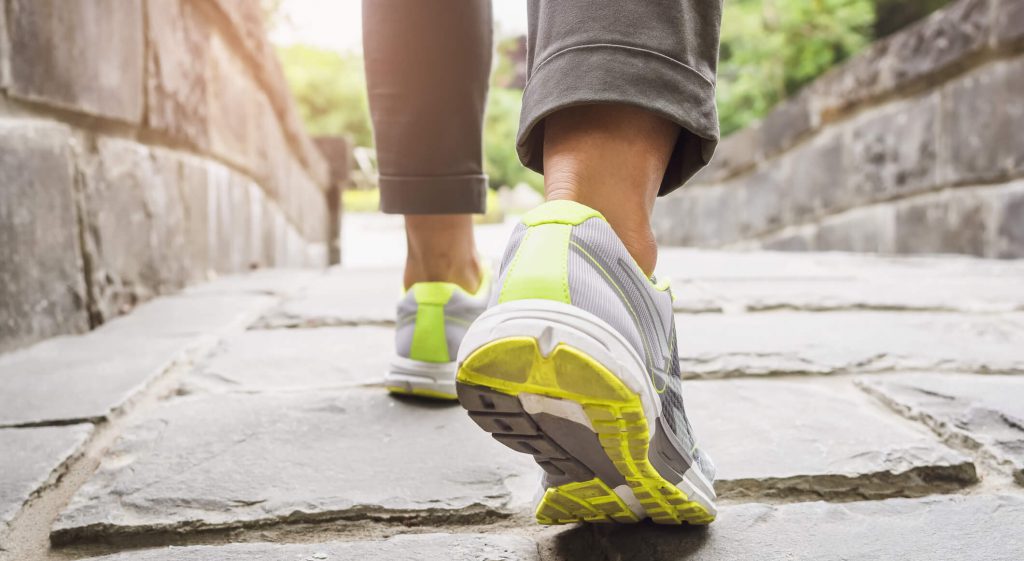August 8, 2023
Shoes, Diabetes, and Foot Health
Foot problems are common in people with diabetes, and wearing the right shoes is a great way to keep your feet safe. Learn more with US MED.
Share This Story

If you haven’t gone shoe shopping since you received a diabetes diagnosis, you might not think you need to change your approach to this process. But foot problems are common in people with diabetes, and wearing the right shoes is an excellent way to keep your feet safe. On the other hand, buying the wrong shoes could aggravate existing foot issues—or even create new problems.
The best shoes for diabetes patients are those made specifically for people living with this condition. Read on for all the information you need about diabetic shoes for women and men, and why foot health is a significant concern for people with diabetes.
Do Shoes Make a Difference?
People with well-controlled diabetes might not have any foot problems—and if that’s the case for you, you probably don’t need specialized shoes. However, foot-related complications are widespread among people with diabetes. If you do find yourself dealing with these problems, diabetic shoes can help.
When you wear shoes designed with diabetes in mind, you’ll reduce your risk of foot ulcers—and, by extension, your risk of related complications. These shoes are capable of protecting and supporting your feet while exposing them to a minimal amount of pressure. Additionally, these shoes often come with extra depth (allowing wearers to use diabetic inserts if needed).
Fortunately, you won’t have to sacrifice your fashion sense to enjoy these benefits. Diabetic shoes for men and women are available in a wide variety of styles, and they aren’t visually distinguishable from non-diabetic shoes.
Types of Shoes to Wear and Avoid
Even if you understand the importance of wearing shoes designed for people with diabetes, you’ll still need to know how to find shoes that are ideal for your needs. Here’s what you should look for in diabetic shoes for men and women—and what you should steer clear of.
Shoes to Wear
Whether you have diabetes or not, wearing shoes that fit your feet correctly is essential. That’s less common than you might think—one study found that approximately 63 to 72 percent of participants wore shoes that didn’t truly fit. Shoes that are oversized or undersized can cause calluses and blisters before you know it, especially if you have trouble noticing these problems due to diabetes-related nerve damage.
Still, shoe size isn’t the only thing you should take into account while shoe shopping. Whether or not you opt for diabetes shoes, make sure that any shoes you buy have:
- A lightweight design. Your shoes should allow your feet to breathe and move.
- Flexibility. Materials like suede, leather, and canvas are ideal in this regard.
- Laces you can tighten and loosen. Feet tend to swell or shrink as the day progresses, and your shoes should be ready to accommodate these changes.
- Shock-absorbing soles. Shoes with these soles can help you deal with pressure at the bottom of your feet.
- A solid back. This will allow your shoes to provide additional support.
It’s also in your best interest to understand a few different types of diabetic shoes. Here are some of the shoe types that fall into this category:
- In-depth shoes. Compared to “normal” shoes, in-depth shoes come with an extra quarter inch or half-inch of depth. Because of that, they’re perfect for callused feet or hammertoes.
- Healing shoes. Healing shoes are a fantastic choice for people recovering from foot injuries or surgery. Both closed and open-toed healing shoes exist, but the latter shoes usually aren’t ideal for people with diabetes.
- Custom shoes. As their name suggests, these shoes are made to fit your precise foot shape. If you have a foot deformity, this might be the best option for you.
Shoes to Avoid
Generally speaking, people with diabetes should try not to wear:
- High-heeled shoes. High heels are infamous for being uncomfortable—the pressure these shoes put on the ball of your foot can easily cause soreness or calluses. They could also contribute to balance issues.
- Ballet flats. These shoes offer zero arch support. As a result, they can play a role in knee, back, and hip problems, along with plantar fasciitis.
- Open-toe shoes, such as flip-flops and sandals. The straps used in these shoes put extra pressure on your feet, which can contribute to blisters and sores. If that wasn’t enough, these shoes also expose your feet to potential injuries.
- Slip-on shoes. Typically, laced shoes provide a more accurate fit and better support.
- Uncomfortable shoes. If you think you need to “break in” new shoes before they can be comfortable, think again—shoes shouldn’t feel painful or cramped the first time you wear them. When you wear a new pair of shoes for a few hours and notice tender, red spots afterward, they’re probably not the right fit for you.
- Shoes with pointed toes. Your shoes should come with a decent amount of wiggle room for your toes. Shoes that cramp your toes can contribute to blisters, corns, and calluses.
The Importance of Foot Health
One of the most notable complications associated with diabetes is foot pain—more specifically, a lack of foot pain. If you have diabetes, you also have an increased risk of nerve damage, or “neuropathy.” Neuropathy can easily cause a loss of feeling in your feet, so you might find it difficult to tell when your feet are suffering from cuts and other injuries.
People with diabetes are also more likely than average to experience gangrene, fungal infections, corns, and bunions. Plus, even seemingly minor foot problems like athlete’s foot or blisters are a bigger deal than usual for people with diabetes. That’s the case because poor blood circulation can make it harder for your feet to heal properly.
Furthermore, neuropathy can cause changes in the shape of your feet. If you have diabetes, you have an increased likelihood of developing hammertoe (a deformity in which a person’s toe joints start to bend inwards).

Learn More About Living a Healthy Lifestyle
Due to the factors mentioned above, people with diabetes need to take their foot health seriously. Knowing what to look for in diabetic shoes for women and men is an important step (pun intended) toward keeping your feet safe. Buying lightweight, flexible, and roomy shoes will significantly lower your risk of foot injuries.
Of course, foot health is only one element of your overall well-being. If you want to know anything about living with diabetes, US MED can help. We’re proud to offer a massive database of diabetes information, including updates on cutting-edge diabetes products and a selection of diabetic-friendly recipes.
On top of that, US MED can provide you with the diabetes supplies you need. If you’re searching for a reliable supplier of continuous glucose monitoring systems, testing supplies, insulin, and more, look no further. Get started by exploring our online shop today!







